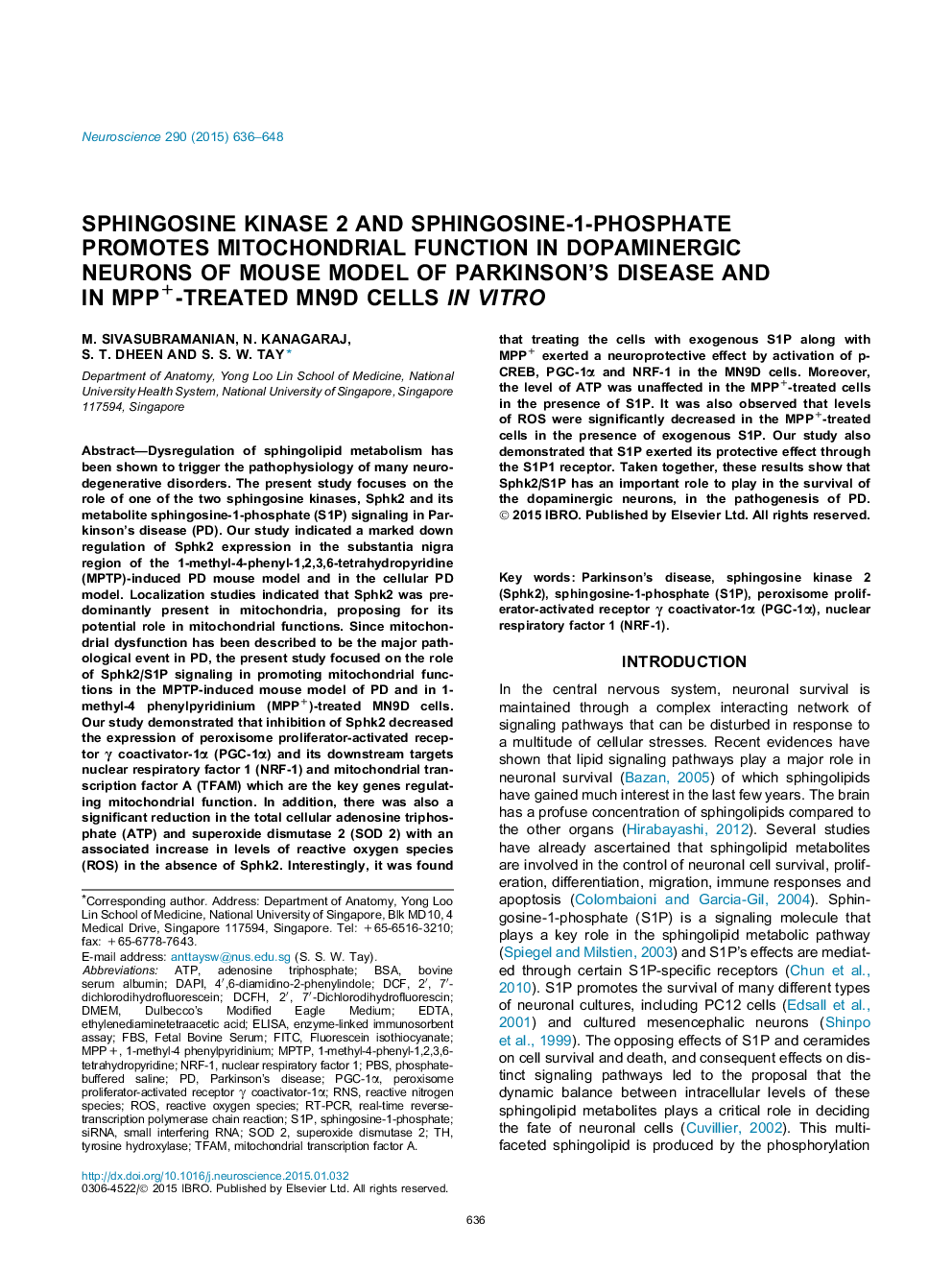| کد مقاله | کد نشریه | سال انتشار | مقاله انگلیسی | نسخه تمام متن |
|---|---|---|---|---|
| 6272728 | 1614786 | 2015 | 13 صفحه PDF | دانلود رایگان |

- Sphk2 expression was down regulated in the SN of MPTP-induced PD mouse model.
- Sphk2 loss in MN9D cells led to a reduction in the level of PGC-1α, NRF-1 in vitro.
- Loss of Sphk2 decreases ATP and increases ROS levels in vitro.
- Exogenous S1P increases the expressions of P-CREB, PGC-1α, NRF-1 and ATP in vitro.
- S1P functions through the S1P1 receptor.
Dysregulation of sphingolipid metabolism has been shown to trigger the pathophysiology of many neurodegenerative disorders. The present study focuses on the role of one of the two sphingosine kinases, Sphk2 and its metabolite sphingosine-1-phosphate (S1P) signaling in Parkinson's disease (PD). Our study indicated a marked down regulation of Sphk2 expression in the substantia nigra region of the 1-methyl-4-phenyl-1,2,3,6-tetrahydropyridine (MPTP)-induced PD mouse model and in the cellular PD model. Localization studies indicated that Sphk2 was predominantly present in mitochondria, proposing for its potential role in mitochondrial functions. Since mitochondrial dysfunction has been described to be the major pathological event in PD, the present study focused on the role of Sphk2/S1P signaling in promoting mitochondrial functions in the MPTP-induced mouse model of PD and in 1-methyl-4 phenylpyridinium (MPP+)-treated MN9D cells. Our study demonstrated that inhibition of Sphk2 decreased the expression of peroxisome proliferator-activated receptor γ coactivator-1α (PGC-1α) and its downstream targets nuclear respiratory factor 1 (NRF-1) and mitochondrial transcription factor A (TFAM) which are the key genes regulating mitochondrial function. In addition, there was also a significant reduction in the total cellular adenosine triphosphate (ATP) and superoxide dismutase 2 (SOD 2) with an associated increase in levels of reactive oxygen species (ROS) in the absence of Sphk2. Interestingly, it was found that treating the cells with exogenous S1P along with MPP+ exerted a neuroprotective effect by activation of p-CREB, PGC-1α and NRF-1 in the MN9D cells. Moreover, the level of ATP was unaffected in the MPP+-treated cells in the presence of S1P. It was also observed that levels of ROS were significantly decreased in the MPP+-treated cells in the presence of exogenous S1P. Our study also demonstrated that S1P exerted its protective effect through the S1P1 receptor. Taken together, these results show that Sphk2/S1P has an important role to play in the survival of the dopaminergic neurons, in the pathogenesis of PD.
Journal: Neuroscience - Volume 290, 2 April 2015, Pages 636-648